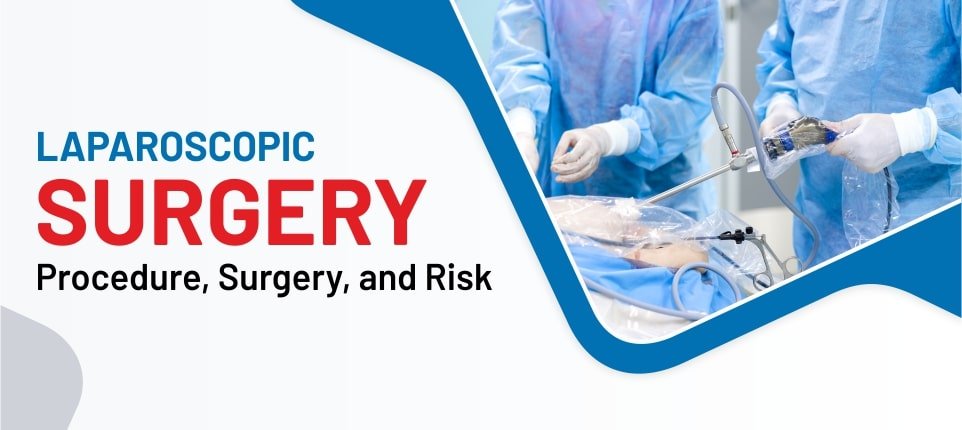


Let’s face it. Surgeries can be scary. While many ailments can be treated with medications, having surgery becomes unavoidable in some cases. Thankfully, you can opt for some surgical procedures today that require minimum incisions.
One such technique is called laparoscopic surgery, which leaves minor scars in its aftermath. Being minimally invasive, laparoscopic surgery is quickly becoming a popular way to treat a host of medical conditions.
The procedure is also known as keyhole surgery.
The procedure can also be used in a biopsy, hernia repair, liver biopsy, appendectomy, gallbladder removal, hysterectomy and spleen removal. Laparoscopy can effectively check health disorders such as scarred tissues, cysts and endometriosis.
Laparoscopic surgery is also used for diagnostic and therapeutic purposes in many disorders and conditions. These include blockages, infections, tumours or abnormal growths, unexplained bleeding, etc.
Laparoscopic surgery is a technique commonly used to identify the source of abdominal or pelvic pain. This surgery comes in handy when certain tests fail to offer actionable insights or information for a dependable diagnosis.
A doctor may suggest you undergo laparoscopy to treat problems associated with:
Laparoscopic surgery works by using fibre-optic technology, which involves the transmission of light through fibre-optic cables that are thinner than human hair!
It involves using a laparoscope, a long telescope-like instrument that a Physician inserts through an incision in the abdominal wall. You might remain awake during the process. The laparoscope has a high-resolution camera and high-intensity light at its front. This helps transmit an enlarged image of the internal organs onto a video screen (similar to an ultrasound), allowing the surgeon to view the area of interest.
Several small incisions also enable the doctor to insert different surgical instruments into the abdomen. These may include: grasping instruments for lifting tissue and pushing it aside, scissors for cutting, cauterising tools for sealing blood vessels, injectors for filling body cavities with fluid or gas, and so on.
The surgeon makes a tiny cut near the belly button, known as an umbilical incision. Typically, Carbon dioxide (CO2) gas is pumped into the abdominal cavity through this tiny opening to inflate it. This makes the internal organs easier to see and work on.
The surgeon will then remove a possible tumour or correct other problems using these instruments under visual guidance. A surgeon can carry out the entire procedure using just these small incisions. This results in less postoperative pain and faster recovery times than more traditional surgery.
Your doctor may recommend specific tests before you have laparoscopic surgery. This helps the medical team to diagnose the root cause of a problem. It also allows them to offer you a much more effective, personalised treatment.
Your healthcare provider may ask you for previous test reports, such as X-rays, pathology reports, film reports, etc., from another facility.
In addition to complete medical history, these tests may include:

Laparoscopic surgery is generally performed in a hospital. However, you must visit a well-equipped facility for the best outcomes. The procedure typically comprises the following steps:
Laparoscopic surgeries are quite safe and extremely common worldwide. Nonetheless, there is a slight possibility of minor problems, as with any operation.
These may include infection, minor bleeding, mild pain and discomfort. You may also feel nauseous or sick.
Occurring in just one out of every 1,000 cases, serious risks and complications are exceedingly rare in laparoscopic surgeries. These may include damage to an artery or an organ like the bladder or bowel. Some patients might feel the aftereffects of anaesthesia due to an allergic reaction.
More severe problems may include inflammation of the abdominal wall, a blood clot entering the bloodstream and gas bubbles entering veins. Further surgery often becomes essential for treating such conditions. However, as said before, these complications are highly uncommon.
The benefits of laparoscopic surgery far outweigh its risks. Since keyhole surgery consists of fewer slits and cuts, it has several benefits compared to traditional surgical methods. Some of these advantages include:
As you have seen, laparoscopic surgery can prove helpful in a broad spectrum of problems like Appendicitis, Endometriosis, Hernia, Inflammatory bowel disease (IBD), Pelvic inflammatory disease (PID) and many more. First, however, it is crucial to choose a trusted laparoscopic surgeon and healthcare provider that can offer you the proper treatment.
Amandeep Hospital’s ‘Department of General & Laparoscopic Surgery’ provides world-class services to its patients. The hospital has a dedicated facility for diagnosis and treatment for surgeries comprising skin, soft tissues, abdomen, breast, etc. With highly experienced doctors and medical staff, you can rest assured about getting the best-in-class treatment.
So, if you are struggling with a condition or looking for the best laparoscopic surgeons in Amritsar, visit Amandeep Hospital or book an appointment today!
September 30, 2024
Recognize the Signs: Understanding Appendicitis Pain Symptoms
September 24, 2024
Unveiling the Truth: I-Pill Side Effects Every Woman Should Know
We use cookies to enhance your experience. By clicking "Accept", you agree to our use of cookies.